
Introduction
On the bench today is the Cooler Master I70C for LGA 1700 (RR-I7C7-18PA-R1). It is part of Cooler Master’s Standard Cooler series that sports a variety of coolers designed to take the place of the retail box cooler included with processors. They tend to be configured to work in a single socket, and in our case, we’re looking at one that is specific to the LGA 1700 socket.
Per Cooler Master, the Cooler Master I70C for LGA 1700 is designed for Intel CPUs that have a TDP of 65W or less. This means that we are swapping out our typical test bench for an Intel i5 12400-based rig and comparing it directly to the Intel retail box cooler that came with the CPU.
Cooler Master I70C for LGA 1700 Overview
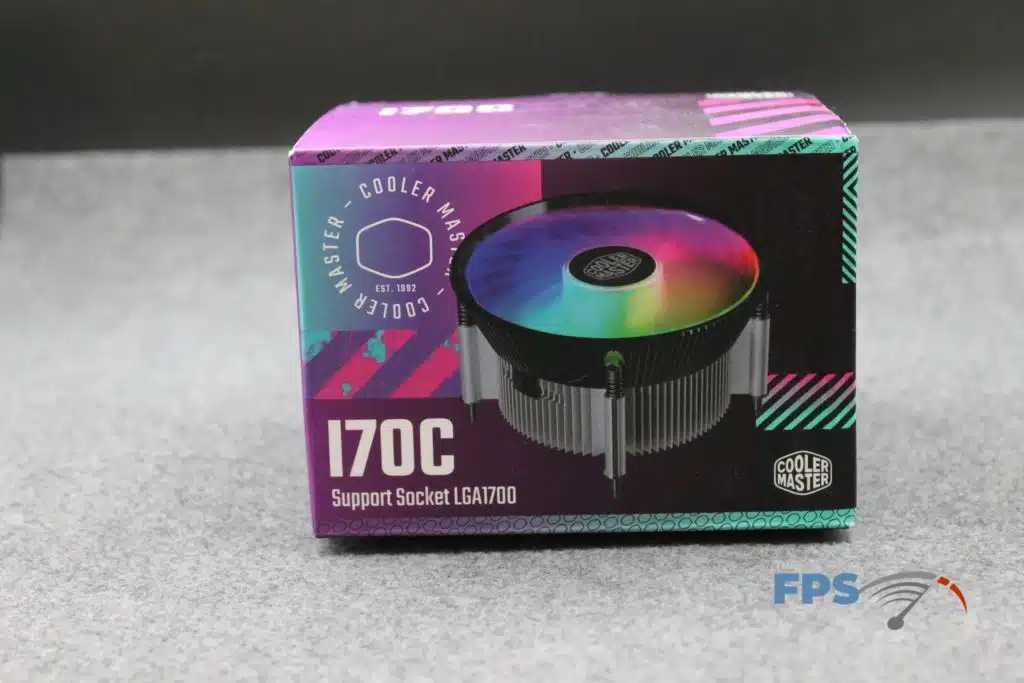

The Cooler Master I70C for LGA 1700 cooler is an air cooler that is designed to work only on the LGA 1700 socket with CPUs that have a TDP of fewer than 65 watts. There are other coolers in the I70 line that works with other specific Intel sockets, so make sure you’re getting the right I70 series cooler for your setup.
Heatsink
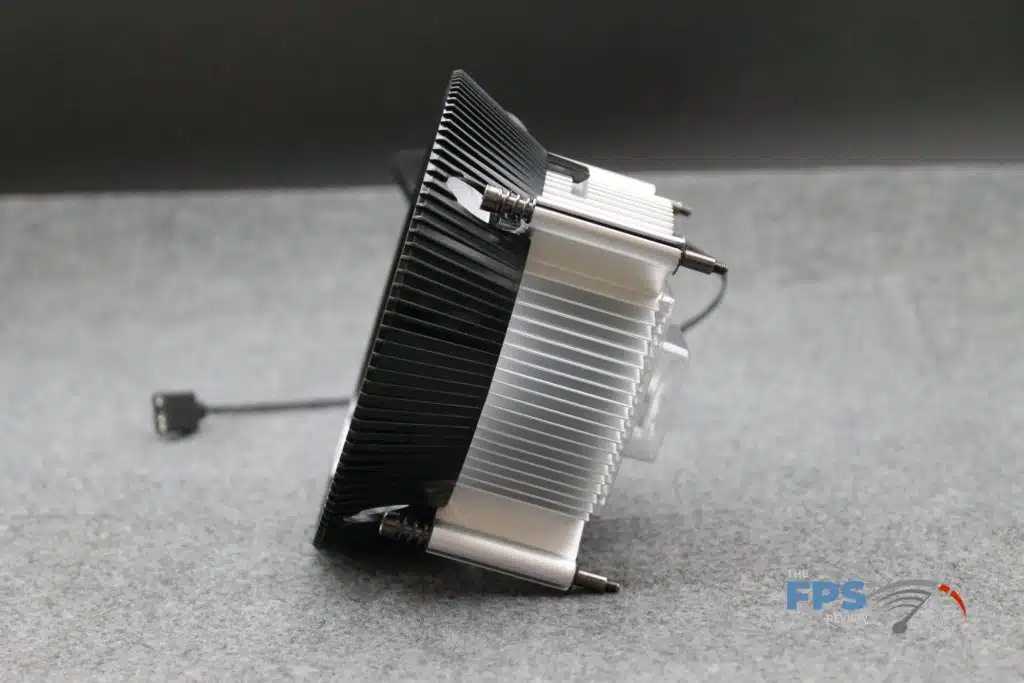

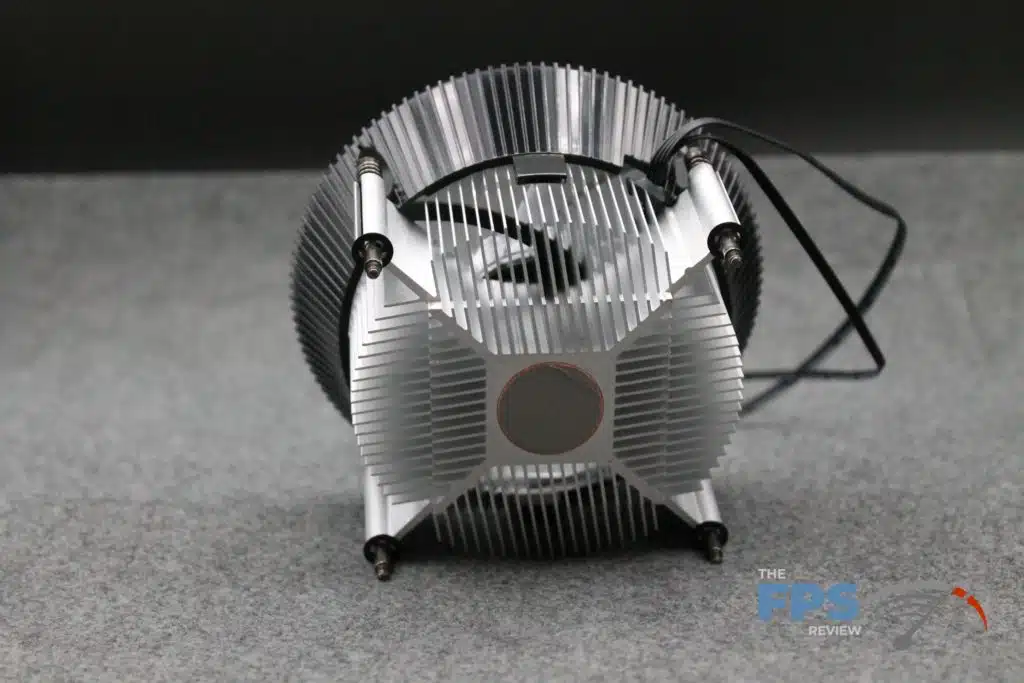
Cooler Master I70C for LGA 1700 sports a copper slug surrounded by aluminum fins that provide dissipation from the CPU. The heatsink assembly is cooled by a shrouded 120mm fan that sports the Cooler Master logo and some RGB LEDs.
Fan
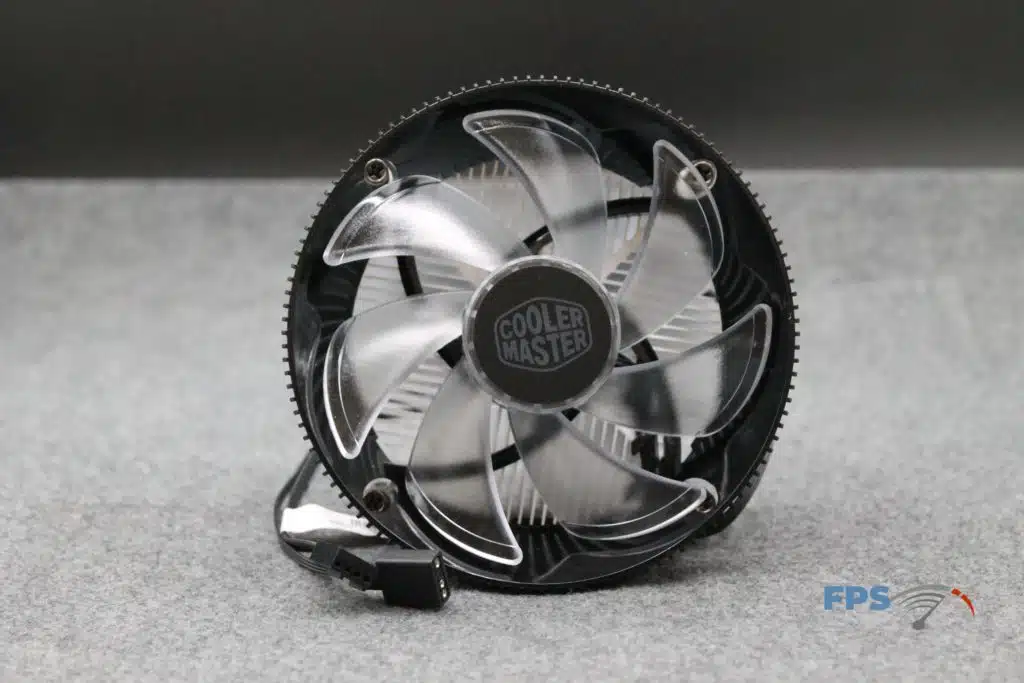
Cooler Master includes a single 120mm fan mounted to the top of the heatsink that includes RGB LEDs that connect to ASUS AURA Sync, GIGABYTE RGB FUSION, MSI Mystic Light Sync, and ASRock RGB LED.
The fan is rated for 1.44W of power, a maximum noise level of 28 dB(A), a rotational speed of 650-1800 RPM, a maximum of 37.08 CFM, and the MTTF is greater than 40,000 hours. Lastly, this fan uses a 4-pin PWM connector.
Test Setup
As mentioned in the introduction, the Cooler Master I70C for LGA 1700 is not designed for our test bench’s loads. We gave it a quick spin with our 12900K CPU and found it would get thermally limited even running single-thread operations. Therefore, we’ve brought out our Intel i5 12400 CPU for testing.
For the test scenarios, we will run the Intel i5 12400 in a “Box Fan” limited power configuration and a “No Limit” power configuration (to simulate overclocking performance). We’ll test using both full fan speed and 50% PWM fan speeds while running loops of CineBench R20.
Installation
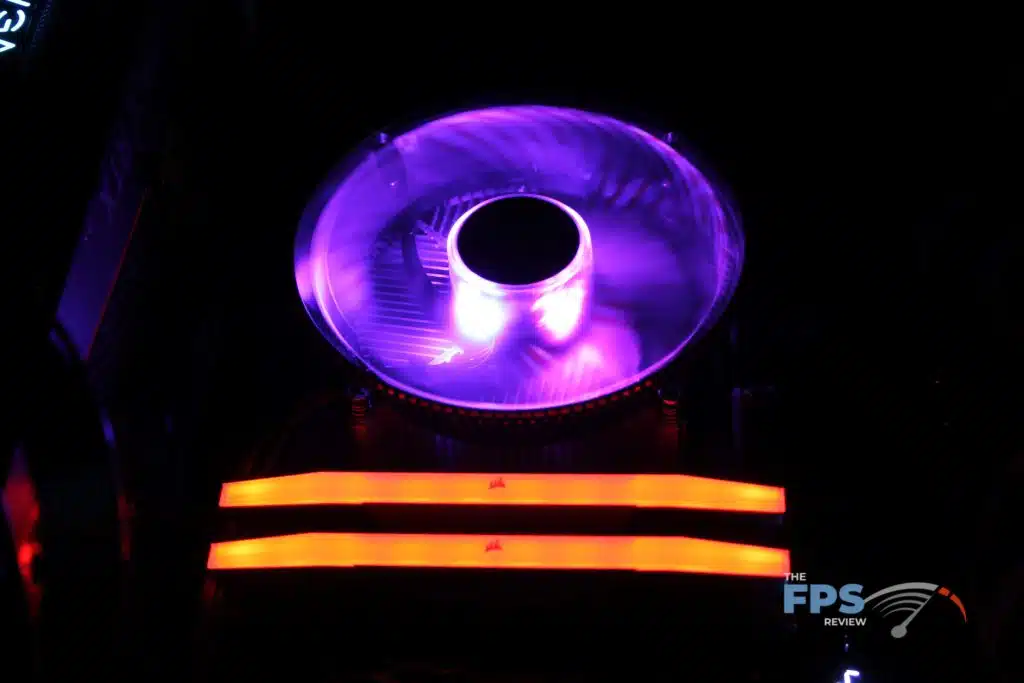
Installation was a straightforward exercise as we simply needed to hold the backplate on the back of the board and crank the screws down on the other end of it. While this was a bit more involved than the thumb pushpin setup that the retail box cooler had, it was easy enough for us.
With everything comfortably situated, let’s see if the Cooler Master I70C for LGA 1700 is ready to be cool!
Thermal Testing
For our thermal testing, we have configured our CPU to run with the “Box Fan” power limit within the BIOS and secondly with “No Limit” on power within the BIOS to simulate a heavier load. This yields an approximate 65w load at the “Box Fan” limit and some small handful of watts higher without the limit.
Box Fan Power Limit – Max RPM Fans
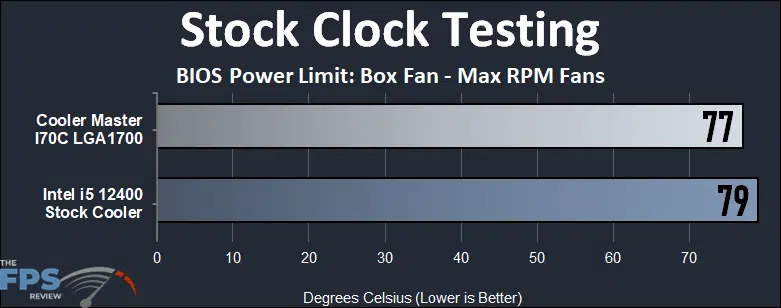
We started our testing today by turning the fans up all the way to 11. Now, this 11 setting means different things to the coolers. In the case of the Cooler Master I70C for LGA 1700,l it means 1800 RPM whereas, for the retail box cooler, it means 3200 RPM.
Looking at performance, the Cooler Master I70C for LGA 1700 was able to keep the CPU cooled to 77 degrees Celsius, which is two degrees better than the retail box cooler.
Box Fan Power Limit – Half RPM Fans

Dropping the fans to half speed, we saw an increase in temperatures across the board but the Cooler Master I70C for LGA 1700 was able to maintain its 2-degree lead over the box cooler at 85 degrees Celsius. Keep in mind that the fan speed for the Cooler Master I70C for LGA 1700 and the box cooler was 900 RPM and 1600 RPM respectively.
No Power Limit – Max RPM Fans
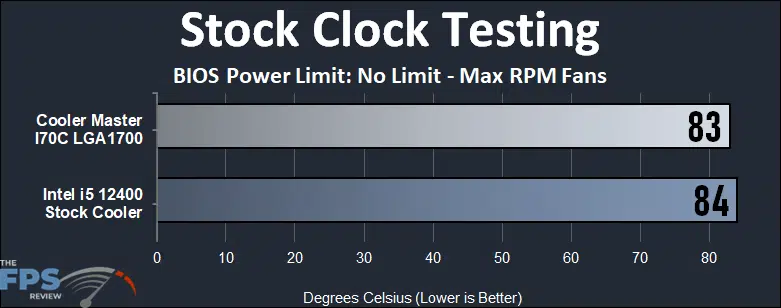
Cranking the heat up a bit with the fan at full blast we found the Cooler Master I70C for LGA 1700 maintaining 83 degrees Celsius with the box fan running a degree warmer. Don’t forget that the fan speed for the Cooler Master I70C for LGA 1700 and the box cooler was 1800 RPM and 3200 RPM respectively.
No Power Limit – Half RPM Fans
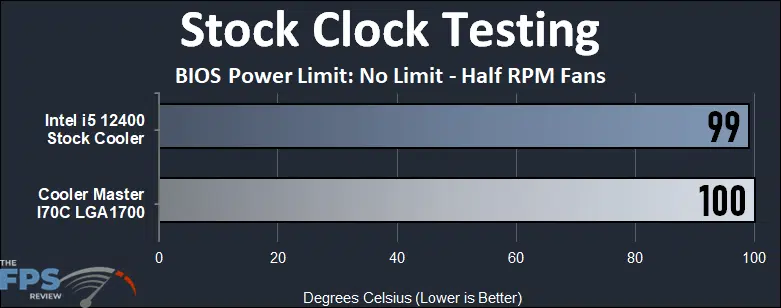
For our final test, both of our contenders boarded the fail bus and achieved temperatures of 99 and 100 degrees Celsius, both of which caused some thermal throttling to kick in on the CPU. Don’t forget that the fan speed for the Cooler Master I70C for LGA 1700 and the box cooler was 900 RPM and 1600 RPM respectively.
Sound Level Testing
While we were testing cooling capabilities, as outlined in our recent introduction article, we were also tracking the sound level of each of the coolers using a Risepro SPL meter attached to a boom arm pointed directly at the fan at a distance of 12 inches. We recorded the dB(A) level for each fan and pump speed tested. The ambient room sound level measured 33 decibels. Displayed below are the results of our Stock Clock Testing.
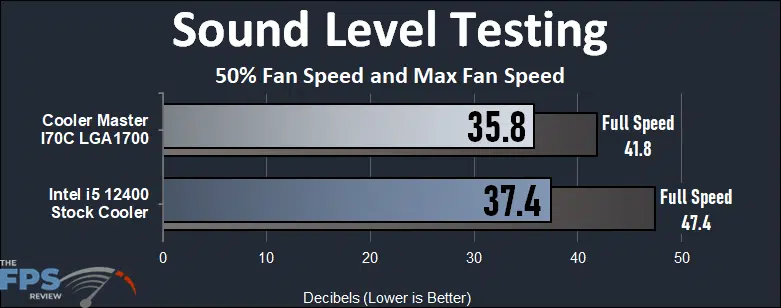
Looking at the sound output, we found the Cooler Master I70C for LGA 1700 to produce 41.8 dB(A) of noise when running at full blast. From a subjective perspective, this blended in well with our overall environment and did not meaningfully contribute to the room. Bumping it down to 50% fan speed, the sound disappeared into the background at 35.8 dB(A).
As a comparison, the Intel Box Cooler registered 47.4 dB(A) and subjectively sounded like it was training to become a weed whacker. However, when dropping down to 50% fan speed, it sounded more like a weed whacker after it runs out of gas.
Conclusion
In this review, we strapped the Cooler Master I70C for LGA 1700 to our test bench to see how it performed against the stock retail box cooler. With its upgraded fan and added RGB bling, it presents an interesting upgrade opportunity from the stock retail box cooling fan.
Looking at the thermal performance, the Cooler Master I70C for LGA 1700 outperformed the stock cooler by a small margin in all scenarios, except for the hottest scenario where it was an effective tie for thermal throttling.
From a sound level perspective, the Cooler Master I70C for LGA 1700 delivered its performance at a significantly lower sound level compared to the retail box cooler. This was especially apparent with the fan speeds at their highest levels.
Final Points
The Cooler Master I70C for LGA 1700 is a cost-effective upgrade over the stock intel cooler for those with CPUs that have low TDP values. While we may not want to purchase this for our high-end gaming systems, it’s an interesting choice to consider when you’re spec’ing out a system for others that aren’t using top-end components but still want some RGB bling.
For what it costs, you really can’t find a better way to reduce noise and add some RGB bling to an LGA 1700 system at or below the 65w TDP level.




